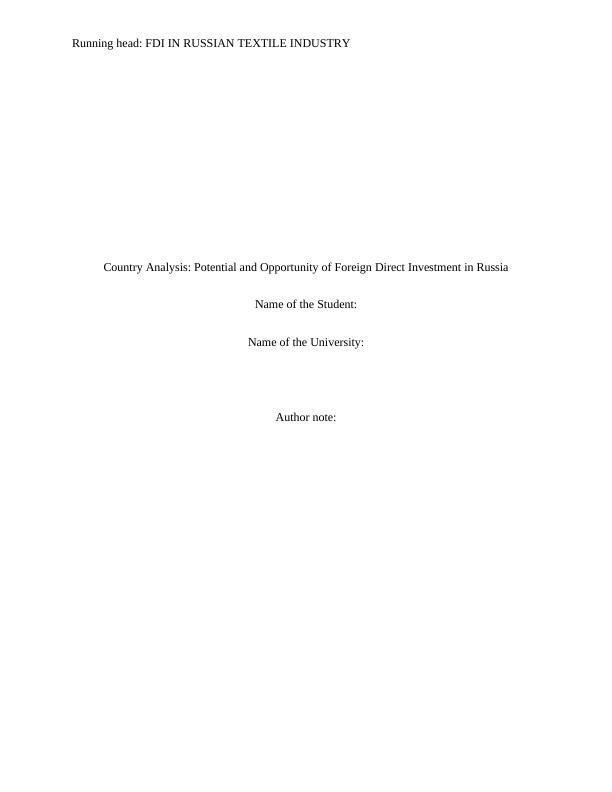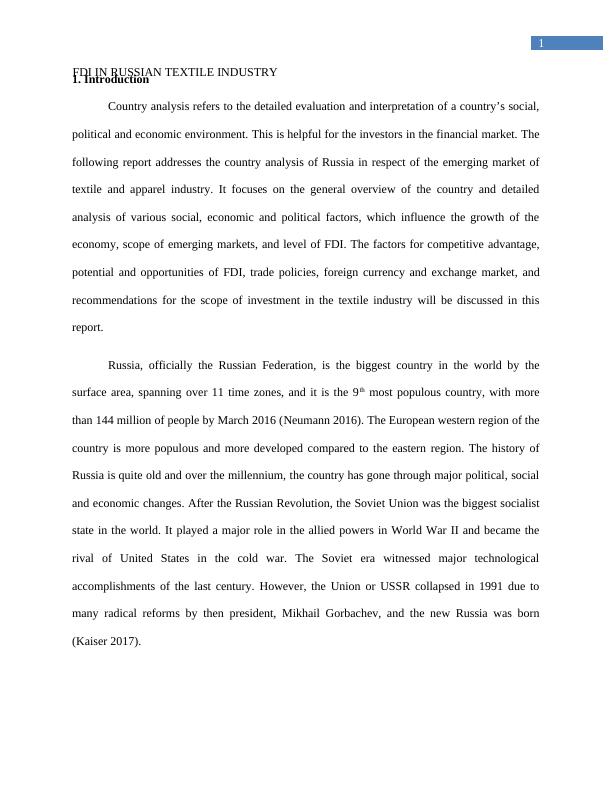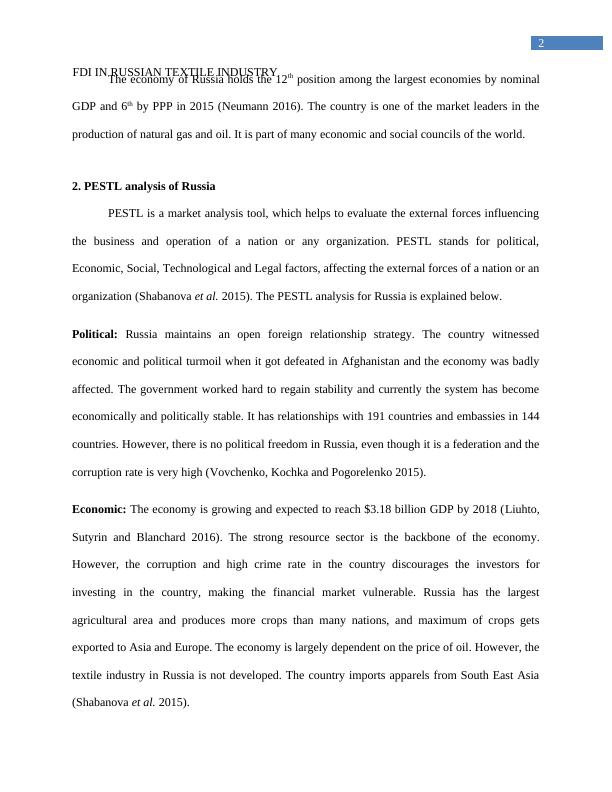MKT11104 - FDI In Russian Textile Industry Report
edinburgh napier university
International Marketing (MKT11104)
Added on 2020-03-01
About This Document
MKT11104 - FDI In the Russian Textile Industry Report, Country analysis refers to the detailed evaluation and interpretation of a country’s social, political, and economic environment. The following report addresses the country analysis of Russian respect for the emerging market of the textile and apparel industry. The country and detailed analysis of various social, economic, and political factors, influence the growth of the economy, the scope of emerging markets, and the level of FDI. The history of Russia is quite old and over the millennium, the country has gone through major political, social, and economic changes. After the Russian Revolution, the Soviet Union was the biggest socialist state in the world.
MKT11104 - FDI In Russian Textile Industry Report
edinburgh napier university
International Marketing (MKT11104)
Added on 2020-03-01
End of preview
Want to access all the pages? Upload your documents or become a member.




